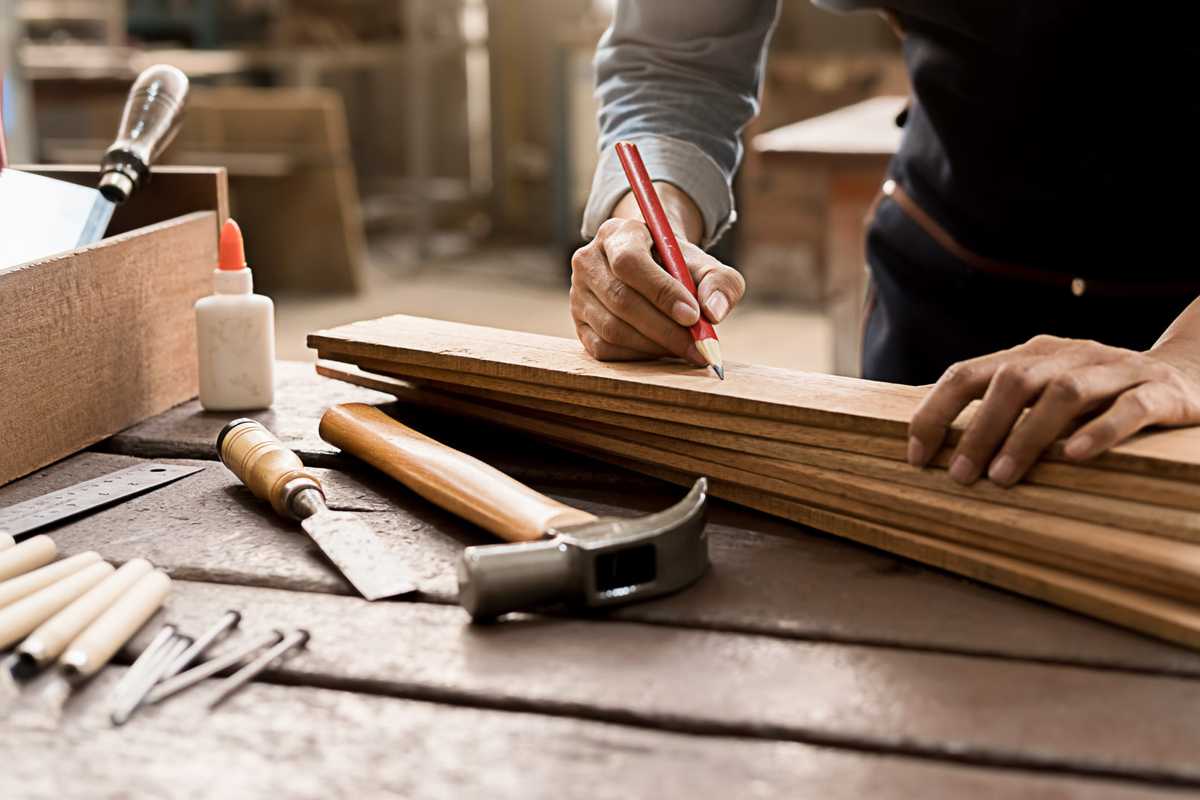
Getting into woodworking can be a fulfilling and creative journey, especially if you’re starting out. In this article, we’re going to guide you through the basics of woodworking in a simple, conversational manner, so you can kickstart your woodworking adventure.
Without further ado, here’s what you should keep in mind:
Learn the Basics
Before you pick up a tool, it’s essential to understand the basics first. This means familiarizing yourself with different types of wood (like pine, oak, and maple), their properties, and how they respond to different woodworking techniques.
Look for beginner-friendly resources, such as YouTube channels dedicated to woodworking basics, or join online communities like Reddit’s r/woodworking where you can ask questions and share your experiences.
Set Up a Workspace
Your workspace doesn’t have to be big, but it should be organized and safe. Even a small table in a well-ventilated area can serve as your starting point. Ensure you have enough lighting and space to handle your materials and tools safely.
A good workbench, even a makeshift one, can make a huge difference.
Start with the Basic Tools
Begin with a modest set of tools and understand their functions. A good quality saw, hammer, drill, screwdriver, measuring tape, and level are indispensable. You can gradually add more tools like chisels, planes, and clamps as your skills and project complexity increase.
Don’t Forget Safety Equipment
Never compromise on safety. Invest in good quality safety glasses, hearing protection, and a dust mask or respirator.
Remember to wear appropriate clothing – avoid loose-fitting clothes and always wear sturdy shoes.
Begin with Simple Projects
If you’re just starting out, it’s essential to choose projects that will help you build your basic skills. A small stool, a simple box, or a basic picture frame are great beginner projects. These help you practice essential skills like measuring, cutting straight lines, and basic assembling techniques.
Practice Makes Perfect
The key to mastering woodworking is consistent practice. Your first projects might not be perfect, and that’s okay. Every project, whether successful or not, teaches you something new.
Embrace Your Mistakes
Mistakes are inevitable and are excellent learning opportunities. Analyze what went wrong and how you can avoid similar mistakes in the future. This approach will make you a more skilled and thoughtful woodworker.
Join a Community
Look for a local woodworking club or workshop where you can meet and learn from others. Online forums and social media groups are also great places to ask questions, share your work, and get inspired.
Expand Your Knowledge
As you become more confident with the basics, start exploring more complex techniques and projects. You might want to learn about dovetail joints, advanced finishing techniques, or how to use power tools safely and effectively.
Experiment with Different Woods
Different types of wood behave differently. Softwoods like pine are easier to work with but can be less durable, while hardwoods like oak are more challenging but offer a more polished finish.
Understanding these differences will help you choose the right wood for your projects.
Be Creative
Woodworking is an art. Allow yourself to be creative with designs and personalization. This could mean experimenting with different wood stains, trying out decorative carving, or designing your own unique piece of furniture.
Precision Matters
While creativity is important, accuracy is crucial in woodworking. Developing skills like measuring accurately and making precise cuts are essential for creating professional-looking pieces.
Upgrade Tools Gradually
As your skills grow, so should your toolbox. Higher-quality tools can improve the ease and quality of your work. However, remember that the best tool is the one you know how to use effectively.
Selecting the Right Materials
The choice of material can greatly impact your project’s look and durability. Spend time learning about different woods, their grain patterns, hardness, and how they respond to cutting and finishing.
Conclusion
Woodworking is more than just a hobby; it’s a journey of continuous learning and creativity. As you advance from a beginner to a more experienced woodworker, you’ll discover the immense satisfaction of creating something with your own hands.
Embrace the process, learn from your experiences, and enjoy the wonderful world of woodworking.
